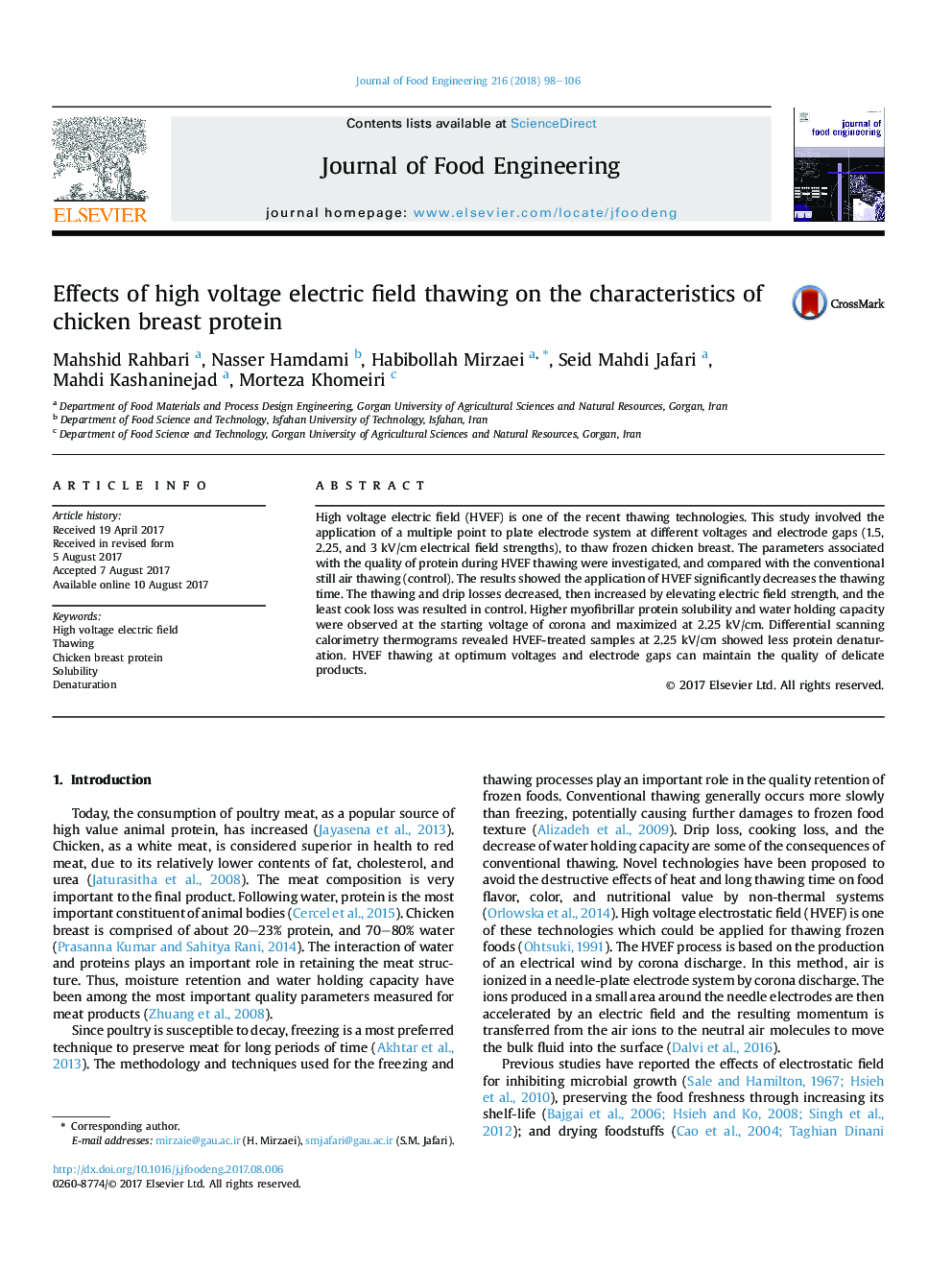| کد مقاله | کد نشریه | سال انتشار | مقاله انگلیسی | نسخه تمام متن |
|---|---|---|---|---|
| 4908873 | 1427085 | 2018 | 9 صفحه PDF | دانلود رایگان |
- High voltage electric technique was proposed for frozen chicken breast thawing.
- HVEF thawing improved thawing rate and water holding capacity of the frozen chicken.
- Protein solubility decreased by increasing voltage and protein denaturation occurred.
- HVEF at optimum voltage and electrode gap, can maintain the quality of thawed product.
High voltage electric field (HVEF) is one of the recent thawing technologies. This study involved the application of a multiple point to plate electrode system at different voltages and electrode gaps (1.5, 2.25, and 3Â kV/cm electrical field strengths), to thaw frozen chicken breast. The parameters associated with the quality of protein during HVEF thawing were investigated, and compared with the conventional still air thawing (control). The results showed the application of HVEF significantly decreases the thawing time. The thawing and drip losses decreased, then increased by elevating electric field strength, and the least cook loss was resulted in control. Higher myofibrillar protein solubility and water holding capacity were observed at the starting voltage of corona and maximized at 2.25Â kV/cm. Differential scanning calorimetry thermograms revealed HVEF-treated samples at 2.25Â kV/cm showed less protein denaturation. HVEF thawing at optimum voltages and electrode gaps can maintain the quality of delicate products.
Journal: Journal of Food Engineering - Volume 216, January 2018, Pages 98-106
